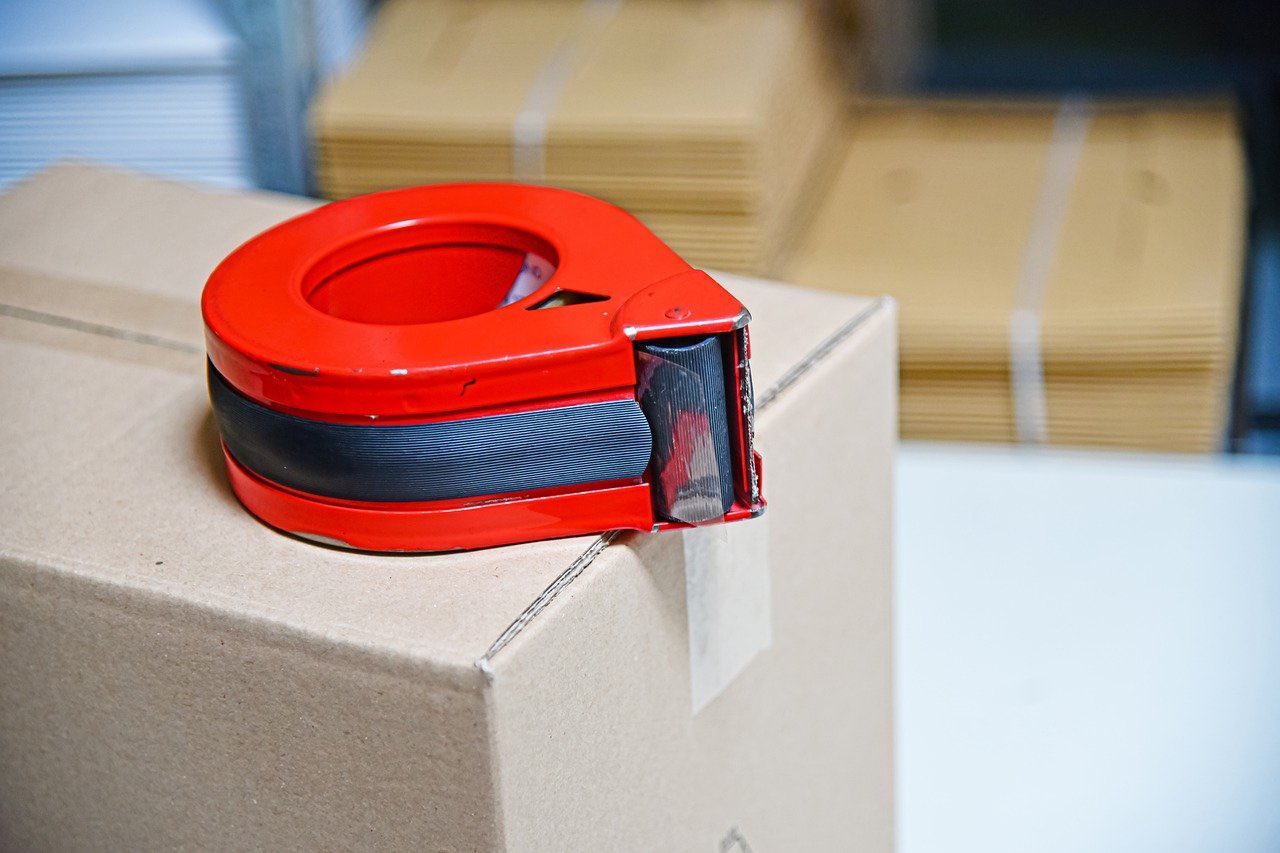Moving can feel like a game of Tetris—fitting all your life’s possessions into boxes and a moving truck. But what if there was a cheat code? A way to make this complex puzzle simpler? That’s where knowing how to pick the right moving company and packing supplies comes in. It’s about more than just moving stuff; it’s about moving your life.
In this guide, we’ll unpack:
- Packing Supplies Essentials: What you need and why.
- How to Choose the Right Moving Company: No more guesswork.
- Maximizing Efficiency: Tips for a smoother move.
P.S., Speaking of making moves smoother, have you heard of Wise Move? It’s Singapore’s go-to platform for connecting with top-notch movers and packers. Just answer some questions, submit contact info, and let local movers in your area send quotes to your inbox directly. You can even talk to vendors, review profile ratings, and get quotes directly to your inbox, all on one secure platform.
17 Essential Packing Supplies for a Smooth Move
When it comes to moving, having the right packing supplies is just as important as choosing the right moving company. Let’s dive into the 17 essential supplies you’ll need to ensure your belongings are safe and secure during the move.
1. Cardboard Boxes
Cardboard boxes are the quintessential packing supply, essential for almost any move. Their versatility and availability make them a go-to choice for packing most items.
- Size Matters: Choose small boxes for heavy items like books and tools, and large boxes for lighter items like pillows and bedding. This makes them easier to carry and minimizes the risk of the bottom giving out.
- Strength is Key: Look for sturdy, double-walled boxes for heavier items. They cost a bit more but provide much-needed durability for your valuable belongings.
- Reuse and Recycle: Consider sourcing gently used boxes from local stores or online marketplaces. It’s eco-friendly and often free.
Wise Move Tip: When listing your items on Wise Move, specify if you have heavy or fragile items. This will help movers know if they need to bring extra supplies or equipment to handle your boxes safely.
2. Bubble Wrap
Bubble wrap is indispensable for protecting fragile items during a move. Its cushioning effect helps prevent breakage and damage.
- Wrap It Right: Use bubble wrap for wrapping dishes, glassware, and delicate ornaments. Ensure that the bubble side is facing inwards for maximum protection.
- Layering: For extra fragile items, double-wrap them, adding an outer layer of bubble wrap for added security.
- Fill the Gaps: Use bubble wrap to fill any empty spaces in boxes. This prevents items from shifting and potentially breaking during transit.
Wise Move Tip: When you list your inventory on Wise Move, mention items that are particularly fragile. This alerts movers to the need for additional care and possibly more bubble wrap.
3. Packing Tape
Strong packing tape is crucial for securing boxes and ensuring they stay closed during the move.
- Seal Securely: Use packing tape to seal box tops and bottoms. Reinforce the seams with multiple tape strips, especially on heavier boxes.
- Tape Dispenser: Invest in a tape dispenser for efficiency and ease of use. It speeds up the packing process and cuts the tape cleanly.
- Label as You Tape: After sealing a box, add a label or write the contents and destination room on the tape. This makes unpacking easier and more organized.
Wise Move Tip: Let your movers know if your boxes are labeled. This way, they can place them in the correct rooms at your new home, saving you time during the unpacking process.
4. Stretch Wrap
Stretch wrap is a versatile tool for bundling items together and protecting furniture surfaces.
- Bundling Made Easy: Use stretch wrap to bundle items like silverware in trays, or to keep cords neatly attached to their appliances.
- Furniture Protection: Wrap stretch wrap around upholstered furniture to protect against dirt and damage. It’s also great for keeping drawers and doors closed.
- No Residue: Unlike some tapes, stretch wrap won’t leave a sticky residue on your items, making it ideal for items where cleanliness is key.
Wise Move Tip: Indicate if you’ve used stretch wrap on furniture or other large items when listing your move on Wise Move. This gives movers a heads-up on the level of care you’ve taken in prepping your items, helping them plan for safe transportation.
5. Marker Pens
Marker pens are essential for labeling boxes, making it easier to identify and sort them at your new home.
- Color Coding: Use different colored markers for different rooms. For example, blue for the bedroom, red for the kitchen. This simplifies sorting and unpacking.
- Detailed Labels: Write a brief description of contents and which room they belong to. Add special handling instructions like “Fragile” or “This Side Up”.
- Waterproof Markers: Opt for waterproof markers to ensure labels remain legible even if exposed to moisture.
Wise Move Tip: Share your labeling system with your movers via Wise Move. This helps them understand your organization method and handle boxes accordingly.
6. Furniture Pads
Furniture pads protect your furniture from scratches, dents, and damage during the move.
- For Delicate Surfaces: Wrap wood or glass surfaces with furniture pads to prevent scratches.
- Layering: For extra protection, layer furniture pads and secure them with stretch wrap.
- Reusable: These pads are not only great for moving but also useful for future home renovations or as a protective layer in storage.
Wise Move Tip: Notify your movers if you’ve pre-wrapped furniture. This information can assist them in planning the loading of the truck efficiently.
7. Moving Blankets
Moving blankets provide additional protection for your furniture and larger items.
- Cushioning: Drape moving blankets over furniture to cushion against bumps and jostles during transit.
- Versatility: They can also be used to fill empty spaces in the moving truck, preventing items from shifting.
- Noise Reduction: Moving blankets can help muffle noise from clanking objects, making for a quieter and smoother move.
Wise Move Tip: Listing items already wrapped in moving blankets on Wise Move can assure movers of the level of care you’re expecting for your belongings.
8. Mattress Covers
Mattress covers keep your mattress clean and protected from dust, dirt, and moisture during the move.
- Size-Specific: Choose a cover that fits your mattress size for snug protection.
- Waterproof Options: Consider waterproof covers, especially if moving in rainy weather or storing the mattress.
- Reusable: These covers are not just for moving; they can be reused for storage or future moves.
Wise Move Tip: If you’ve got your mattresses covered, mention it on Wise Move. This lets movers know they need to handle these items with care to maintain their cleanliness.
9. Wardrobe Boxes
Wardrobe boxes are perfect for moving clothes without wrinkling or folding them.
- Easy Clothing Transfer: Simply transfer clothes from your closet straight to the box, hangers and all.
- Sturdy and Spacious: These boxes are designed to handle the weight of hanging clothes.
- Dual Purpose: After the move, they can serve as temporary closets during the unpacking process.
Wise Move Tip: Let your movers know if you’re using wardrobe boxes. This helps them allocate space in the moving truck for these tall items.
10. Packing Peanuts
Packing peanuts provide additional cushioning for your items, filling up the empty space in boxes.
- Shock Absorption: They’re excellent for absorbing shocks and vibrations during transit.
- Eco-Friendly Options: Look for biodegradable packing peanuts for an environmentally friendly move.
- Filler: Use them to fill gaps in boxes to prevent items from shifting and getting damaged.
Wise Move Tip: If you’ve packed boxes with packing peanuts, inform your movers on Wise Move. This indicates that the boxes contain fragile items that require gentle handling.
11. Foam Pouches
Foam pouches are ideal for individually wrapping items like dishes, glasses, and electronics.
- Protection Layer: They provide a soft layer of protection, reducing the risk of scratches and breaks.
- Convenience: Much quicker than individually wrapping items in bubble wrap.
- Versatile Sizes: Available in various sizes, making them suitable for a wide range of items.
Wise Move Tip: Mention the use of foam pouches for delicate items when listing your move on Wise Move. This detail helps movers understand the level of protection you’ve provided.
12. Sealable Plastic Bags
Sealable plastic bags are great for keeping small parts organized during a move.
- Organize Small Items: Perfect for screws, bolts, and other small parts from disassembled furniture.
- Prevent Loss: Ensure small, easy-to-lose items stay together and are easy to find.
- Moisture Protection: Protects against moisture, which is particularly useful for electronics and cables.
Wise Move Tip: If you’re using sealable bags for small parts, label them and mention this on Wise Move. This way, movers know these bags are important and need to be kept with the corresponding items.
13. Corrugated Fiberboard Sheets
Corrugated fiberboard sheets provide extra protection for flat items like mirrors or artwork.
- Rigid Protection: They offer a stiff layer to guard against punctures and bending.
- Layer Between Items: Place between stacked items to prevent scratches or damage.
- Customizable: Can be cut to fit the exact size of your item, ensuring a snug fit.
Wise Move Tip: Detailing the use of corrugated fiberboard for specific items on Wise Move helps movers plan for the safest way to transport these delicate pieces.
14. Tape Gun
A tape gun simplifies the process of sealing boxes, making it quicker and more efficient.
- Speed and Efficiency: Saves time by easily dispensing and cutting tape as you seal boxes.
- Consistency: Provides a consistent, secure seal every time.
- Ergonomic: Designed for comfort, reducing hand fatigue during prolonged packing sessions.
Wise Move Tip: If you’re pre-sealing boxes before the move, inform your movers on Wise Move. This indicates that your boxes are ready to go and helps with planning the moving process.
15. Labels or Stickers
Labels or stickers are crucial for identifying the contents and destination room of each box.
- Clarity: Clearly marked labels help in sorting and unpacking at your new home.
- Color-Coding: Use different colored labels for different rooms for easy identification.
- Handling Instructions: Add labels for “Fragile,” “This Side Up,” or “Heavy” to inform handlers of care needed.
Wise Move Tip: Share your labeling strategy on Wise Move so movers can easily understand your system and handle boxes accordingly.
16. Tool Set
A basic tool set is necessary for disassembling and reassembling furniture during your move.
- Essentials: Include screwdrivers, wrenches, and a hammer for basic disassembly.
- Organization: Keep tools in a separate, clearly labeled box for easy access.
- DIY Disassembly: Disassembling furniture beforehand can save time and space during the move.
Wise Move Tip: Let your movers know via Wise Move if you’ve already disassembled large furniture items. This helps them plan for space and reassembly needs at your new home.
17. Dollies and Hand Trucks
Dollies and hand trucks are indispensable for moving heavy items with ease and preventing injury.
- Efficiency: Greatly reduces the physical strain of moving heavy items and speeds up the process.
- Variety: Choose between upright hand trucks for boxes and flat dollies for furniture.
- Safety: Ensures safe handling of heavy items, reducing the risk of damage and injury.
Wise Move Tip: If you have dollies or hand trucks available for the move, mention it on Wise Move. Movers can then coordinate with you to make the best use of these tools, ensuring a smoother move.
How to Choose the Right Moving Company
Making a move doesn’t have to be a leap into the unknown. The key? Picking the right movers and packers company. But with so many options out there, how do you make sure you’re choosing the best one? Let’s break it down.
1. Assessing Your Moving Needs
Before you start searching for a mover, take a moment to really understand what your move entails. This means taking a good look at what you’re moving. Do you have a lot of bulky furniture or perhaps some delicate items like a piano or artwork? Knowing this helps you find a mover who specializes in handling your specific needs.
- Understand Your Inventory: List everything you’re moving, especially large or unique items.
- Distance Matters: Are you moving locally or across the country? Different movers specialize in different types of moves.
- Special Requirements: If you have items that require special care or storage needs, look for movers who offer these services.
- Timing is Key: Your schedule matters. Some movers are more flexible and can accommodate last-minute changes.
Pro Tip: Create a detailed inventory list with photos. This not only helps you keep track of your items but also provides clear documentation in case of insurance claims.
2. Researching Moving Companies
Doing your homework on potential moving companies is vital. This involves not only browsing through online reviews but also tapping into your personal network. See what others are saying about their moving experiences.
- Online Reviews: Check platforms like Google and Yelp for customer reviews.
- Word of Mouth: Ask friends or relatives who recently moved for their recommendations.
- Industry Recognition: Look for companies that have received awards or recognition in the moving industry.
- Social Media Insights: See how active the company is on social media and how they interact with customers.
Pro Tip: Set up Google Alerts for the moving companies you’re considering. This way, you’ll stay updated on any recent news or customer experiences related to these companies.
3. Verifying Credentials
Ensuring that a moving company is legitimate and reliable is a critical step. This means checking their licenses and insurance, along with their history in the industry.
- Licensing Check: Verify that the company is legally registered and licensed to operate.
- Insurance Verification: Make sure they have proper insurance to cover any potential damages during the move.
- Background Checks: Platforms like Wise Move pre-vet movers, saving you the hassle.
- Compliance Records: Investigate their history with industry regulatory bodies.
Pro Tip: Check for the company’s membership in reputable industry associations. Membership often requires meeting certain quality standards and can be a sign of credibility.
4. Understanding Pricing Structures
Understanding how movers and packers price their services can save you from unexpected costs. It’s crucial to get a clear breakdown of what you’re paying for.
- Transparent Quotes: Ask for detailed quotes that outline all costs.
- Comparing Prices: Get estimates from several companies to gauge the market rate.
- Hidden Fee Awareness: Inquire about any additional charges that might apply.
- Value vs. Price: Sometimes, the cheapest option may not offer the best value.
Pro Tip: Request a binding estimate. This means the cost quoted in the estimate is the maximum you’ll have to pay, protecting you from unexpected price hikes.
5. Evaluating Services Offered
Different moving companies offer different services. Some might do everything for you, while others allow you to be more hands-on. It’s important to understand what each company offers and how that aligns with your needs.
- Full-Service vs. DIY: Decide if you want the mover to handle everything or if you prefer to be more involved.
- Packing Services: Some companies offer comprehensive packing and unpacking services.
- Storage Solutions: If you need temporary storage, look for movers who provide this.
- Special Handling: For delicate items, make sure the mover has the necessary expertise.
Pro Tip: If opting for packing services, request a packing demonstration to assess the quality and care they’ll use with your items.
6. Communicating with Movers
Effective communication with your moving company can greatly influence the success of your move. It’s essential to establish clear communication from the start.
- Initial Contact: Observe how quickly and professionally they respond to your inquiries.
- Questions to Ask: Don’t hesitate to ask about their moving process, timelines, and how they handle unexpected situations.
- Setting Expectations: Clearly communicate your needs and expectations for the move.
- Feedback Loop: A good moving company will welcome your feedback and work to address any concerns.
Pro Tip: Create a “moving brief” that outlines all your expectations and requirements. Share this with the moving company to ensure everyone’s on the same page.
7. Making the Final Decision
After gathering all the necessary information, it’s time to make your choice. Weigh the pros and cons of each option and trust your instincts.
- Pros and Cons List: Create a list to compare the different companies you’ve considered.
- Trust Your Gut: Sometimes, your intuition can guide you to the right choice.
- Final Review: Revisit your research, notes, and any online reviews.
- Wise Move Advantage: Remember the benefits of using a platform like Wise Move, which streamlines the process by connecting you with pre-vetted movers.
Pro Tip: Conduct a final in-person or virtual meeting with your top choice before making a decision. This gives you a feel for their professionalism and customer service approach.
How Wise Move Can Help You Choose The Best Moving Company You Deserve
Navigating the moving process can be daunting, but Wise Move simplifies it with a user-friendly platform. Here’s a step-by-step guide on how to leverage Wise Move to ensure you’re partnering with the best moving company for your needs.
Step 1: What Are You Moving?
First, identify the items you’re planning to move. This could range from large furniture pieces like sofas and beds to appliances and personal belongings.
For example, create a list detailing items such as a sofa, refrigerator, or boxes of clothes.
Step 2: Insert Your Current Address
Enter the address you’re moving from. This information is crucial for movers to estimate travel time and plan logistics accordingly.
Step 3: Moving From
Detail specifics about your current location. Include information like the floor number if you’re in an apartment, and any access restrictions that might affect the move.
Step 4: Moving To
Provide details about your destination. Just like your current address, mention specifics like apartment floor numbers and access conditions that could impact the move.
Step 5: Moving Date
Select your preferred moving date. Keep in mind, being flexible with your moving date can sometimes open up more options and potentially better rates.
Step 6: Address Moving To
Input the exact address of where you’re moving to. Accuracy here is key to ensure a smooth move.
Step 7: Driver Help Required or Not
Indicate whether you need the driver’s assistance with loading and unloading your items. This helps in matching you with a mover who can meet your specific needs.
Step 8: Add Inventory
List the items you’re moving. The more detailed you are, the more accurate your quotes will be. This helps movers prepare appropriately for your move.
Step 9: Do You Have Photos?
If possible, upload photos of your items, especially larger or more unique ones. This visual aid is incredibly helpful for movers in organizing the right vehicle and equipment.
Step 10: Your Email Address and Submit
Finally, enter your email address for correspondence and submit your request. Wise Move will use this to keep you informed and connect you with suitable moving companies.
Using Wise Move streamlines the process of finding a reliable moving company. It’s about taking the guesswork out of moving and ensuring you have a stress-free experience. With Wise Move, you’re not just moving – you’re moving wisely.
Maximizing Efficiency: Tips for a Smoother Move
Moving can be a complex and sometimes overwhelming process, but with the right strategies, you can maximize efficiency and ensure a smoother transition. Here are some key tips to help you streamline your moving process.
1. Start Early
- Plan Ahead: Begin planning your move several weeks in advance. This gives you ample time to organize, pack, and arrange logistics.
- Schedule Wisely: Avoid busy moving seasons and weekends if possible. Mid-week and mid-month moves often provide more flexibility and better rates.
- Declutter: Use this opportunity to declutter and donate or sell items you no longer need. Less stuff means less to move.
2. Organize and Label Thoroughly
- Inventory List: Keep a detailed inventory of your items, which will be invaluable for both packing and unpacking.
- Room-by-Room Approach: Pack one room at a time and label boxes clearly with contents and the room they belong to.
- Essentials Box: Pack a box of essentials that you’ll need immediately upon arrival at your new home.
3. Utilize Professional Resources
- Hire Reputable Movers: Use platforms like Wise Move to find reliable and vetted moving companies.
- Seek Packing Services: If overwhelmed, consider hiring professional packing services to save time and ensure safe packing.
4. Keep Important Documents Handy
- Personal Records: Keep important documents like passports, birth certificates, and important contracts in a separate, easily accessible bag.
- Moving Paperwork: Have all your moving-related paperwork in one place for easy reference during the move.
5. Plan for Pets and Children
- Safety and Comfort: Make arrangements for pets and children on moving day to ensure their safety and comfort.
- Engage Kids: If appropriate, involve children in the moving process by giving them small, manageable tasks.
6. Final Walk-Through
- Check Every Room: Before leaving, do a final walk-through of your old home to ensure nothing is left behind.
- Utility Check: Make sure all utilities are switched off, and windows and doors are securely locked.
7. Settle In Strategically
- Unpack Essentials First: Start by unpacking your essentials box to make your first night comfortable.
- Room Prioritization: Focus on setting up key areas first, like bedrooms and the kitchen.
Wise Move Tip: Keep your movers informed about your specific needs and plans through Wise Move. Effective communication ensures that they can provide the best service tailored to your moving plan, making your move as efficient and stress-free as possible.
Your Move, Made Smoother with Wise Move
As we wrap up, you’re now equipped with the essential knowledge to tackle your next move. Remember, a well-planned move is a smoother move. Here’s a quick recap of what we’ve covered:
- Choosing the Right Moving Company: Research, verify, and communicate.
- Packing Supplies Essentials: From boxes to bubble wrap, each plays a key role.
- Maximizing Efficiency: Start early, stay organized, and use professional resources.
Moving doesn’t have to be a daunting task. With these tips and the right support, you can navigate this transition with confidence and ease.
Let’s tie it all back to Wise Move. Think of it as your moving journey’s co-pilot, guiding you to the best moving professionals and simplifying the process every step of the way. Wise Move isn’t just about moving your belongings; it’s about moving forward with peace of mind. Ready to make your next move? Wise Move is here to help.







